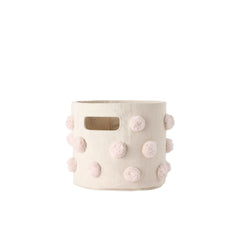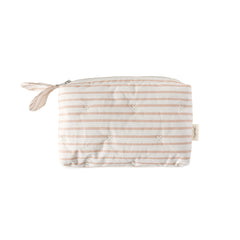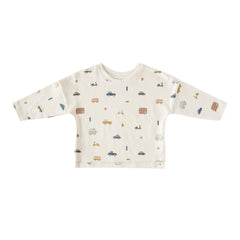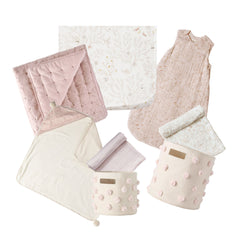Swaddling is one of the most popular techniques to help your newborn get a good night’s sleep, but what happens if your little one isn’t so fond of being wrapped this way? The good news is, there’s no need to panic if this technique isn’t working out for you and your newborn. Like so many things in parenting, there is no one right way to put your baby down for a nap. If your newborn hates swaddles, there are plenty of other tips, tricks, and swaddle alternatives that can help. Scroll down to read about what swaddling is and why many parents leverage this technique. From there, we’ll share some signs that your newborn is not particularly fond of the swaddle, and what you can try instead. A good night’s sleep is within reach!
What is swaddling?
Let’s start with the basics. What exactly is swaddling? Swaddling is a wrapping technique for sleep that involves bundling your little one snuggly into a swaddle blanket. Typically, the arms and legs are bound within the swaddle blanket and just the head is left uncovered. Swaddling is an ancient practice that has been used in many different cultures across the world for centuries.

Swaddle & Hatchling Baby Blanket
Should I swaddle my newborn?
Swaddling is an excellent skill for newborn parents to have in their parenting toolbox when they bring their new baby home as it is a technique that can help your newborn feel safe and secure specifically during sleep. The transition from the womb to the world is quite a dramatic adjustment. Swaddling mimics the environment in the womb which many babies find soothing. For many newborns, swaddling can help them get to sleep faster and stay asleep longer which, as any new parent will tell you, is definitely a good thing! For a step-by-step guide on how to swaddle your baby, check out this helpful article.
Signs your newborn hates swaddles
There is no doubt that swaddling can be a great technique to help with your newborn's sleep routine and transition into their new home. But, it’s not for everyone and that’s okay! Try as they might, some parents simply cannot get their newborns to take to the swaddle. So, how do you know if you should give your little one more time to adjust to swaddling or if it’s time to try something new? Here are a few signs that your newborn hates swaddles enough that it’s probably time to start exploring swaddle alternatives:
- You’ve tried different wrapping techniques. If your little one doesn’t take to the swaddle immediately, try a few different wrapping techniques. It’s also a good idea to try different levels of pressure. Some babies prefer that the swaddle be quite snug while others might prefer a little bit more room. This is something that might also change as your newborn grows. If you’ve tried different wrapping techniques and nothing seems to be working, it might be time to explore swaddle alternatives.
- You’ve tried different materials. Different swaddles are made with different materials and your child might take to one fabric over another, so try a few different swaddles to find one that your little one likes. We recommend opting for 100% muslin cotton options that are both breathable and soft. If you can’t find a fabric your little one finds comfortable, it may be a sign that swaddling is not the right fit for you or your baby.
- You are swaddling at the right time and it’s still not working. Many parents will try to swaddle their little ones a little too late in their naptime routine. It’s best to begin wrapping your newborn before they become overtired and are just beginning to wind down. If your little one has become overtired they might become too fussy to take the swaddle. If you're swaddling at the right time for your little one and they still don’t settle, it may be time to explore a different routine.
- You’ve considered the room temperature. Temperature is an important factor to consider when you’re exploring whether or not your newborn hates swaddles. If your little one’s room is too warm they may be fussing over the temperature rather than the swaddle. Be sure to keep the temperature of your child’s nursery between 68° and 72°F (20° to 22.2°C).
- The swaddle doesn’t calm them. If your instincts as a parent tell you that your little one is not feeling comforted by the swaddle, trust them! If your newborn doesn’t like to swaddle, there is no need to force a technique that you know is not working.

What to do if your newborn hates swaddles
So, you’ve tried different swaddling techniques and different swaddling materials, you’ve controlled the temperature in the nursery, and you’re swaddling at the right time during your child’s sleep routine and they still aren’t taking to it. At this point, it’s probably safe to say that your newborn hates swaddles. You’re not alone in this predicament; many children simply don’t like to be swaddled. There are plenty of swaddle alternatives you can try to help your little one fall and stay asleep. Here are just a few:
Half swaddle
The half swaddle is a great alternative to the full swaddle, especially if your little one seems particularly opposed to having their arms and hands restricted. You’ll know if this is the case if you notice that your child is fighting to break out of the swaddle. The half swaddle technique involves wrapping your little one up with a swaddle below their armpits so that their arms and hands are free. You can wrap your baby so that one arm is free only or you can wrap them so that both arms are free. Try out different options and see what works best for your child.
The sleep bag
If your newborn seems more opposed to leg restriction, then a sleep bag might be a great option. A sleep bag can have a similar effect as swaddling and help your little one fall asleep and stay asleep for longer. Our sleep bags provide your baby with a safe sleep space. Plus, they are made of breathable, soft organic fabric with a side-to-bottom zipper allowing for easy diaper changes when your newborn wakes to feed in the middle of the night.
The sling
A sling is another great alternative that will give your baby a similar safe and enclosed feeling as a swaddle. This is a helpful option to successfully get your little one to drift off if they don’t take a liking to swaddling. Be mindful of ensuring that your baby’s face remains visible and their airways remain unobstructed while you are carrying them in the sling. Once your little one is asleep in the sling, you can slowly and carefully transfer them to their crib. Be sure to take your time when transferring your newborn from their sling into a crib or bassinet. Babies who aren’t swaddled can be more prone to waking themselves up after a startle reflex which can happen when you lay your little one down in their crib after they’ve fallen asleep. Move slowly and rest your hand on your baby’s chest for a few moments after you’ve placed them in their crib so they have a moment to settle. This can help counteract their startle reflex and help ensure they stay asleep during transfers.

Sleep Sounds
White noise machines or calming music are another great way to soothe your little one if they don’t enjoy being swaddled. Since your newborn may be more prone to waking themselves up through their startle reflex if they are not swaddled, it’s helpful to have other strategies in place to reduce stimuli that may cause the startle reflex to occur in the first place. A white noise machine or a soothing playlist can drown out external noises and, in turn, help keep your little one sleep for longer.
Baby Massage
An infant massage is a great component to add to your baby’s bedtime ritual if they don’t enjoy being swaddled. Doing a massage during bathtime or just after helps soothe your baby. Be sure to give your baby some time between feedings and massages so they are able to digest properly.
Learning how to massage your baby in the way that is the most comforting and soothing can take some time. Slowly and gently knead each area of your little one’s body and pay attention to how they respond. With consistency and over time, the massage signals to your baby that it’s time for sleep. Since the massage signals sleep and relaxation, it also becomes a helpful tool when your newborn does startle themselves awake during a nap.






